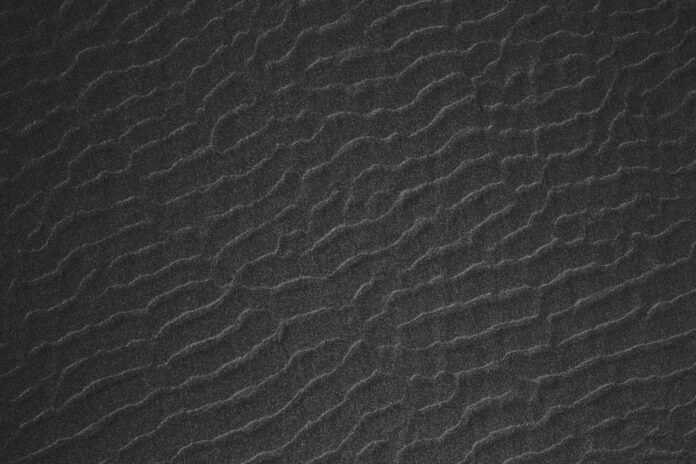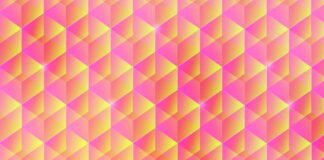PIFu, short for Pixel-Aligned Implicit Function, is a cutting-edge deep learning approach that bridges the gap between 2D images and 3D models. Developed by researchers from the University of Southern California (USC), PIFu has revolutionized the field of computer vision and computer graphics by enabling the reconstruction of 3D human body shapes from a single 2D image. This groundbreaking technique has far-reaching implications, ranging from virtual reality and augmented reality applications to medical imaging and fashion design. In this article, we delve into the intricacies of PIFu, its underlying principles, and the diverse applications that have emerged from this groundbreaking research.
The challenge of generating accurate 3D models from 2D images has long been a central problem in computer vision and computer graphics. Converting 2D images into 3D representations has the potential to unlock new possibilities in a wide range of fields, including entertainment, education, and industrial design. Traditionally, 3D reconstruction from 2D images has required multiple images or depth information, making the process complex and computationally demanding. PIFu addresses this challenge by introducing an innovative implicit function-based approach that eliminates the need for additional images or depth data.
At the heart of PIFu is the concept of implicit functions. Instead of explicitly representing the 3D shape of an object, PIFu encodes it as an implicit function. An implicit function takes a set of coordinates as input and outputs a value that indicates whether the point lies inside or outside the surface of the object. This elegant formulation allows PIFu to reconstruct 3D shapes from 2D images effectively. The key insight lies in pixel alignment, where the 2D pixels of an image are aligned with their corresponding 3D positions on the surface of the reconstructed object. This alignment is achieved through the implicit function, which accurately estimates the occupancy of 3D space based on the information present in the 2D image.
PIFu operates in two main stages: the depth map prediction stage and the 3D reconstruction stage. In the depth map prediction stage, PIFu generates a depth map from the 2D image using a neural network. The depth map represents the distance from the camera to each pixel in the image, providing valuable information about the 3D structure. The second stage involves using the depth map to reconstruct the 3D shape of the object. PIFu employs another neural network, the implicit function network, to predict the occupancy of 3D space at each pixel location based on the provided depth information. By combining the depth map and the implicit function, PIFu accurately reconstructs the 3D shape of the object from a single 2D image.
The advantages of PIFu extend beyond its ability to generate 3D models from 2D images. One of the significant benefits is its versatility in handling diverse subjects, including human bodies, animals, and inanimate objects. PIFu can reconstruct detailed and realistic 3D representations, capturing subtle nuances and intricate surface textures. This level of fidelity is crucial in various applications, such as virtual try-on for fashion, where precise body measurements and clothing fit are essential.
The potential applications of PIFu are vast and varied. In the domain of virtual reality and augmented reality, PIFu enables realistic virtual avatars and interactive experiences. Users can have their virtual representations generated from a single photograph, making it a valuable tool for personalized VR/AR content creation. PIFu has the potential to enhance teleconferencing and online communication by providing lifelike avatars that closely resemble users’ actual appearances.
In the medical field, PIFu has implications for 3D medical imaging and diagnostics. With just a 2D medical image, PIFu can reconstruct the 3D anatomy of organs or body parts, aiding in surgical planning, patient education, and diagnosis. The ability to create detailed 3D models from standard medical images can streamline healthcare workflows and improve patient outcomes.
PIFu also holds promise for applications in robotics and autonomous systems. By providing a more accessible and efficient method for 3D reconstruction, PIFu can enhance robotic perception and scene understanding. Robots equipped with PIFu-like capabilities can navigate complex environments more effectively and interact with objects with improved spatial awareness.
In the world of art and design, PIFu can revolutionize the creative process. Artists and designers can conceptualize and iterate on 3D models using simple 2D sketches or reference images. This democratization of 3D content creation has the potential to unleash a wave of creativity and innovation across various industries.
Despite its remarkable achievements, PIFu is not without challenges. The quality of the reconstructed 3D models heavily relies on the quality and diversity of the training data. Insufficient or biased data may lead to inaccuracies in the reconstruction process, particularly for less common or complex objects. Additionally, like many deep learning approaches, PIFu’s computational requirements can be demanding, limiting its real-time applicability on resource-constrained devices.
In conclusion, PIFu represents a groundbreaking advancement in the fields of computer vision and computer graphics. By seamlessly bridging the gap between 2D images and 3D models, PIFu opens up new possibilities in various domains, from virtual reality and medical imaging to art and robotics. Its implicit function-based approach has paved the way for more accessible and accurate 3D reconstruction, transforming how we interact with digital content and the physical world. As research in deep learning continues to evolve, PIFu is poised to play a significant role in shaping the future of immersive technologies and creative expression.
Pixel-Aligned Implicit Function:
PIFu introduces a novel implicit function-based approach that accurately reconstructs 3D shapes from 2D images by aligning pixels with their corresponding 3D positions on the surface.
Single Image 3D Reconstruction:
PIFu can generate detailed and realistic 3D models of various subjects, including human bodies and objects, from a single 2D image, eliminating the need for multiple images or depth information.
Versatility and Fidelity:
PIFu demonstrates versatility in handling diverse subjects and produces high-fidelity 3D representations, capturing intricate surface textures and nuances, essential for applications like virtual try-on in the fashion industry.
Broad Applications:
PIFu finds application in virtual reality, augmented reality, medical imaging, robotics, and creative fields, enabling realistic virtual avatars, enhancing surgical planning, improving robotic perception, and revolutionizing the creative process.
Democratizing 3D Content Creation:
PIFu democratizes 3D content creation by simplifying the process of generating 3D models from 2D sketches or images, empowering artists and designers with a more accessible and efficient tool for innovation and creativity.
PIFu, the Pixel-Aligned Implicit Function, has become a groundbreaking advancement in the world of computer vision and computer graphics. It represents a major breakthrough in the field of 3D reconstruction, offering an innovative solution to the long-standing challenge of converting 2D images into accurate 3D models. The development of PIFu has been driven by the growing demand for more accessible and efficient methods for creating realistic 3D representations, applicable across diverse industries and domains.
The idea of reconstructing 3D models from 2D images has captivated researchers and developers for decades. The ability to effortlessly transform 2D images into 3D representations holds immense potential for various applications, ranging from entertainment and gaming to healthcare and design. Traditional methods of 3D reconstruction have often relied on complex algorithms and multi-view imaging techniques, requiring multiple images or depth data to create accurate 3D models. These approaches are computationally intensive and can be challenging to implement in real-world scenarios.
PIFu introduces a fresh perspective by leveraging the power of deep learning and implicit functions. The concept of implicit functions, where an object’s 3D shape is represented as a function without explicitly defining the surface geometry, allows PIFu to overcome the limitations of previous techniques. The implicit function maps 3D coordinates to values that indicate whether a point lies inside or outside the surface of the object. By accurately estimating the occupancy of 3D space based on information present in a single 2D image, PIFu reconstructs the 3D shape of the object with remarkable precision.
The core idea behind PIFu is pixel alignment. By aligning the 2D pixels of an image with their corresponding 3D positions on the surface of the object, PIFu establishes a direct correspondence between the 2D image and the 3D model. This alignment is achieved through the implicit function network, which learns to predict the occupancy values at each pixel location based on the depth information provided by a depth map. The depth map, generated in the initial stage of PIFu, represents the distance from the camera to each pixel in the image, providing valuable 3D structural information.
The process of generating a 3D model with PIFu involves two main stages: depth map prediction and 3D reconstruction. In the depth map prediction stage, a neural network analyzes the 2D image and generates a depth map. The depth map encodes information about the 3D structure of the object, allowing PIFu to understand the spatial relationships between pixels in the image. In the second stage, the implicit function network takes the depth map as input and predicts the occupancy of 3D space for each pixel. The combination of the depth map and the implicit function enables PIFu to reconstruct a detailed and accurate 3D model from a single 2D image.
The versatility of PIFu is a key aspect of its success. Unlike some previous methods that were limited to specific types of objects or required specialized datasets, PIFu can handle diverse subjects, including human bodies, animals, and various inanimate objects. This flexibility makes PIFu applicable in a wide range of industries and domains, from entertainment and virtual reality to medical imaging and robotics.
In the realm of virtual reality and augmented reality, PIFu has the potential to transform user experiences by creating realistic and personalized avatars. With just a single photograph, users can have their virtual representations generated, resulting in more immersive and interactive VR/AR content. The lifelike avatars made possible by PIFu closely resemble users’ actual appearances, enhancing teleconferencing, social interactions, and gaming experiences.
PIFu’s implications in the medical field are equally profound. By reconstructing 3D anatomical structures from standard 2D medical images, PIFu can aid in surgical planning and patient education. Surgeons can have a better understanding of patient anatomy, leading to more accurate procedures and improved outcomes. In diagnostic imaging, PIFu’s ability to create detailed 3D models from 2D images can assist in identifying abnormalities and improving the accuracy of medical diagnoses.
PIFu’s potential in robotics and autonomous systems lies in its ability to enhance scene understanding and spatial awareness. Robots equipped with PIFu-like capabilities can navigate complex environments more effectively, avoiding obstacles and interacting with objects with greater precision. This advancement has significant implications in industries where robotics plays a vital role, such as manufacturing, logistics, and healthcare.
From an artistic standpoint, PIFu revolutionizes the creative process by democratizing 3D content creation. Artists and designers can now conceptualize and iterate on 3D models using simple 2D sketches or reference images. PIFu’s user-friendly approach opens up new possibilities for creativity and innovation, enabling artists to explore and experiment with 3D designs without the need for extensive 3D modeling expertise.
Despite its remarkable achievements, PIFu faces some challenges. The quality of the reconstructed 3D models heavily relies on the quality and diversity of the training data. Insufficient or biased data can lead to inaccuracies in the reconstruction process, particularly for less common or complex objects. Addressing this challenge requires continuous research and development to improve the robustness and generalization capabilities of PIFu.
Furthermore, PIFu’s computational requirements can be demanding, especially during the training phase of the neural networks. Training PIFu models may require significant computational resources, limiting its real-time applicability on resource-constrained devices. As the field of deep learning progresses, efforts are being made to optimize and accelerate the PIFu training process, making it more accessible and feasible for real-time applications.
In conclusion, PIFu’s emergence marks a significant milestone in the field of computer vision and computer graphics. By leveraging implicit functions and pixel alignment, PIFu offers a transformative solution for generating accurate 3D models from 2D images. Its versatility and practicality make it applicable across diverse industries, ranging from entertainment and medicine to robotics and design. PIFu’s impact on virtual reality, medical imaging, robotics, and creative content creation is evident, promising to shape the future of immersive technologies and visualization techniques. As researchers continue to refine and expand the capabilities of PIFu, its potential for real-world applications and advancements remains limitless.














